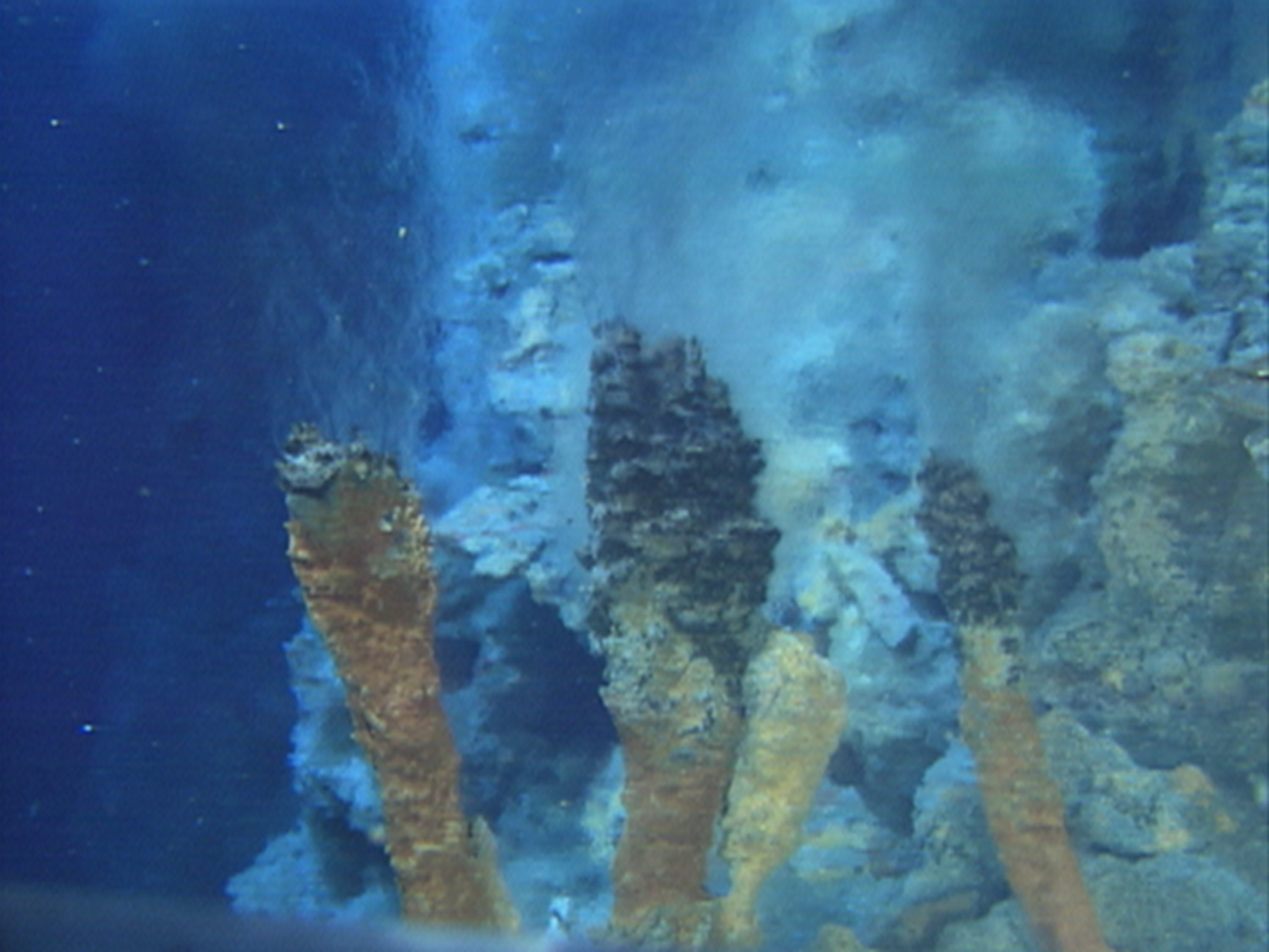The Fascinating, Terrifying Sounds in the Deepest Ocean Trench in the World
Scientists recorded 23 days worth of material nearly seven miles below the surface.

Vents at the Mariana Trench. (U.S. Fish and Wildlife Service/CC BY 2.0)
The Challenger Deep is the deepest known point on the ocean floor, more than 36,000 feet below the surface. Part of the Mariana Trench, this nearly fathomless depression is located in the Pacific Ocean around 200 miles from the coast of Guam.
Just four manned missions have descended the nearly seven miles to the Challenger Deep, the last in 2012. Until recently, though, what it sounded like down there was still unknown.
But with the aid of a specially-modified hydrophone, scientists with the National Oceanic and Atmospheric Administration recorded sounds in Challenger Deep over the course of 23 days last year. They publicly released their findings–and the first sounds ever heard outside of the trench–this week.
The resulting sounds are fascinating, and not a little terrifying.
Oceanographer Robert Dziak, the leader of the project, said that the scientists were surprised to hear much of anything at all.
But even sounds from the surface reached the trench several miles below.
“The ambient sound field is dominated by the sound of earthquakes, both near and far, as well as distinct moans of baleen whales, and the clamor of a category 4 typhoon that just happened to pass overhead,” Dziak said.
The hydrophone was lowered into the trench in July, staying there for four months before scientists returned in November to get the device. The device was built with inch-thick titanium to withstand pressures of 16,000 pounds per square inch at the bottom of the ocean, compared to 14.7 pounds per square inch above the surface of the water, according to NOAA.
Though the hydrophone recorded just a couple weeks’ worth of material, typhoons and shipping schedules prevented scientists from retrieving it until November.
“You would think that the deepest part of the ocean would be one of the quietest places on Earth,” Dziak said. “Yet there is almost constant noise.”













Follow us on Twitter to get the latest on the world's hidden wonders.
Like us on Facebook to get the latest on the world's hidden wonders.
Follow us on Twitter Like us on Facebook